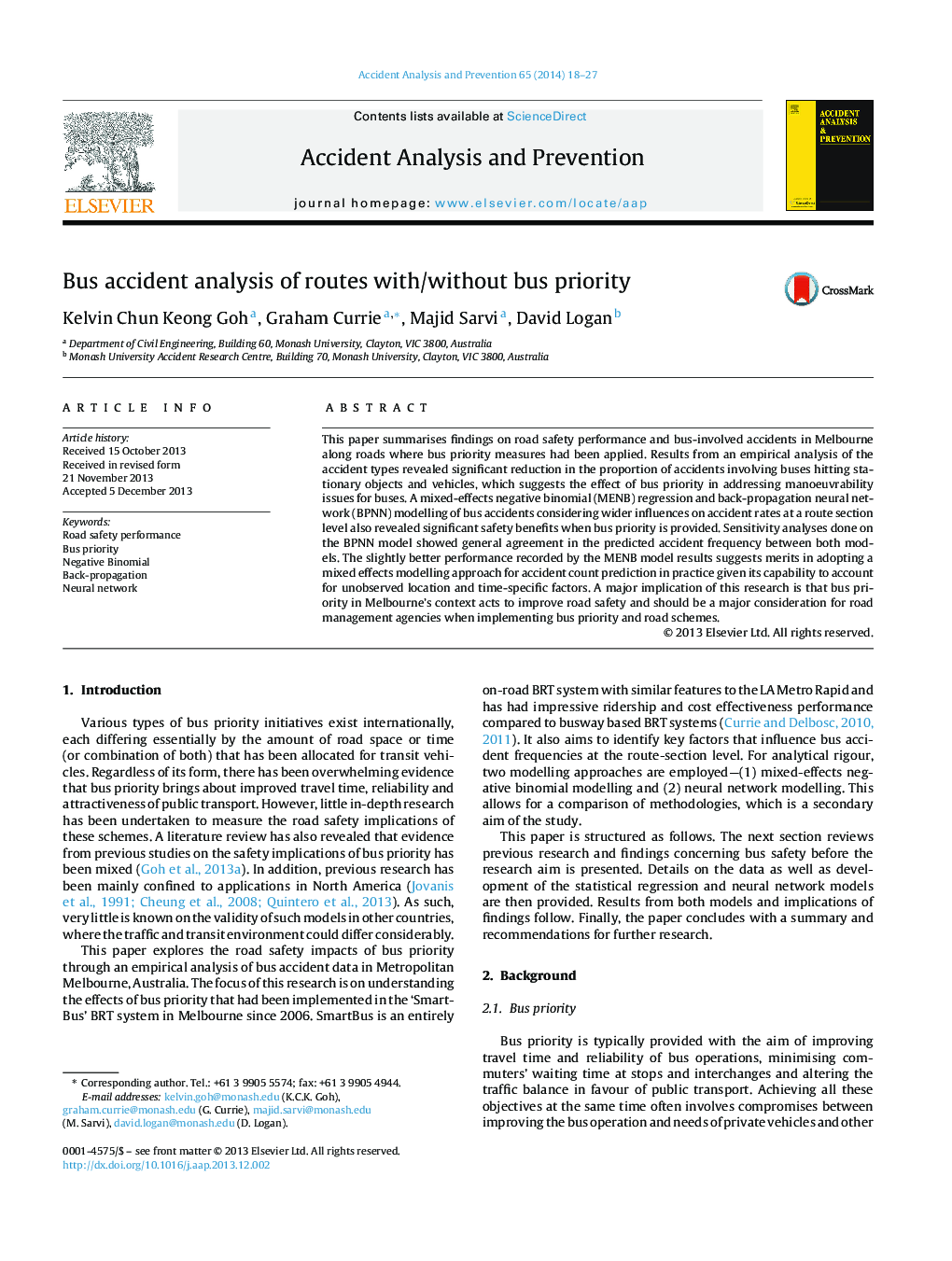| Article ID | Journal | Published Year | Pages | File Type |
|---|---|---|---|---|
| 6965963 | Accident Analysis & Prevention | 2014 | 10 Pages |
Abstract
This paper summarises findings on road safety performance and bus-involved accidents in Melbourne along roads where bus priority measures had been applied. Results from an empirical analysis of the accident types revealed significant reduction in the proportion of accidents involving buses hitting stationary objects and vehicles, which suggests the effect of bus priority in addressing manoeuvrability issues for buses. A mixed-effects negative binomial (MENB) regression and back-propagation neural network (BPNN) modelling of bus accidents considering wider influences on accident rates at a route section level also revealed significant safety benefits when bus priority is provided. Sensitivity analyses done on the BPNN model showed general agreement in the predicted accident frequency between both models. The slightly better performance recorded by the MENB model results suggests merits in adopting a mixed effects modelling approach for accident count prediction in practice given its capability to account for unobserved location and time-specific factors. A major implication of this research is that bus priority in Melbourne's context acts to improve road safety and should be a major consideration for road management agencies when implementing bus priority and road schemes.
Related Topics
Physical Sciences and Engineering
Chemical Engineering
Chemical Health and Safety
Authors
Kelvin Chun Keong Goh, Graham Currie, Majid Sarvi, David Logan,
